Seven sins of dubious discipline
Enterprise-architecture, strategy, or just about everything, really – they all depend on disciplined thinking, disciplined sensemaking and decision-making.
But what happens when that discipline is lost? What are the ‘sins’ that can cause that discipline to be lost? And how can we know that it’s been lost?
Yeah, I know this is a theme I’ve kept returning to many times over the years – most recently in posts such as the ‘Services and disservices‘ series, ‘Auftragstaktik and fingerspitzengefühl‘, and ‘Round the bend‘. But it’s so central to all of our work, and yet so often sidestepped or ignored, that we really do need to develop discipline around discipline itself.
(If ‘discipline’ seems too stern a term, remember that all it means, literally, is ‘following’. All that we’re doing here is being a bit more careful and observant about how we think – following the paths of our own thinking, and steering the thinking-about-thinking as needed, so as get better at helping “things work better, together, on purpose”. No big deal, in other words – but really, really worth doing better, if we can…)
Rather than a single ‘the discipline’, what I’m more interested in is the dynamics of discipline – how the disciplines themselves need to change in different contexts and for different purposes. This in turn points to a need for a metadiscipline, or ‘discipline of discipline’ – a skills / sensemaking equivalent of ‘governance of governance‘.
If we’re not careful, this gets complicated (or complex, or chaotic, or…) really quick, so there’s a real need to keep it down to something manageable. Where I started with this, way too many years ago, was with a fairly straightforward split between methods, mechanics and approaches – with methods arising as a personal resolution between the objective elements (‘mechanics’) and subjective elements (‘approaches’) of the skill:
Each method in effect represents a different discipline, each of which is to some extent subjective – which is why this gets so confusing if we try to teach ‘skills’ as if they’re the same for everyone. But to make sense of it, in a way that we can use consistently for (almost) everyone and in (almost) every case, we need some kind of metadiscipline, built around an appropriate metaframework. After a couple of decades, if via a somewhat circuitous route, I eventually settled on a framework of just four core types of discipline, in dynamic relationship with each other – the four ‘modes’ of the swamp-metaphor, which could be summarised visually as follows:
The quick summary is that each of the disciplines does a different task, for sensemaking and decision-making within the respective context-space:
- Artist mode – moves around at high speed to gather information and experiences
- Believer mode – acts on the task immediately at hand, using only the current assumptions and ‘laws’, to deliver expected-certain outcomes
- Scientist mode – applies analysis to arrive at certain predictions, ‘laws’ and ‘truths’
- Technologist mode – explores, assesses and evaluates ideas, information and experiences, to derive potentially-useful enhancements of value
These modes aren’t fixed, or static: none of them is ‘the right mode’, ‘the one true method’ that works everywhere, for everything. Instead, each mode does some things well, and others not so well, or even be exactly what not to do in certain types of context. So as described in more detail in the post ‘Sensemaking – modes and disciplines‘, we apply a metadiscipline in which we move dynamically from mode to mode, fractally, recursively, according to context and need.
To make it work well, we need to know at all times:
- which mode is needed for the current context and type of action
- which mode we’re ‘in’ – are currently using in sensemaking and decision-making for that action
- why and when and how to switch to another mode, dynamically, and which mode to switch to
If we don’t manage that switching appropriately, we’ll be trying to apply the wrong disciplines in the wrong way to the wrong type of context – and quality of work will suffer as a result. Not A Good Idea…
But to put all this into viable, useful real-world practice, those discipline-failures – the sins of dubious discipline – really must be faced. I’m aware that I might be a bit unpopular with some folks for focusing on this, because a few deeply-cherished delusions may get trodden on in the process. But fact is that if we don’t face those delusions… well, to be blunt, there won’t be much point in anything that we do, in enterprise-architecture or anything else. Yes, it really is that bad. Seriously.
To identify what we might describe as ‘the sources of sin’, it’s useful first to cross-map the disciplines-set onto the SCAN frame:
And the transitions between the modes are much like the ‘edges’ between the domains in SCAN:
We also note that there are distinct techniques and focus-themes that are associated with each SCAN domain, and hence also often associated with the respective discipline-modes:
The problems arise when people try to use the wrong techniques or the wrong mode in a context that, at that point, actually needs or demands the disciplines associated with another mode. Most often this happens because the respective person clings on to one particular mode, or avoids another, simply because it either is, or isn’t, what they’re comfortable with.
Probably the classic description of this was CP Snow’s ‘The Two Cultures‘, which in effect describes the over-dominance of either the Scientist-mode or the Artist-mode. One of the reasons for this is that both of those two modes are strongly self-reinforcing: the Scientist-mode is all about ‘objective rationality’, which aligns well with certainty, whilst the Artist-mode is all about emotion and subjective experience, which aligns well with inherent-uncertainty and ‘the Shock of the New‘.
Those are problematic enough in themselves, because they do encourage people to get stuck in the respective mode, dependent on whether they’re more comfortable with certainty and the ‘rationality’ of theory, or uncertainty and real-world emotion. Yet the more serious problems often arise from the other two modes, because they embed inherent clashes deep within their very core: the Technologist is about rationality, but deals with uncertainty, whereas the Believer relies on supposedly-certain ‘laws’ or ‘truths’, but is actually rooted in emotion. We can summarise all of this visually as follows:
For the Technologist-mode, there are very real risks hidden within that innocuous-seeming yet often dangerously-misleading term ‘applied science’. Science and technology are often related, sure, but their deepest roots are fundamentally different – a point explored in various posts here, such as ‘“It’s not rocket-science”‘ and ‘Enterprise-architect – applied-scientist, or alchemist?‘. The core questions are fundamentally-different, too:
- science: “How does it work?” (‘truth’)
- technology: “How can it be worked, or worked better?” (‘value’)
The Scientist mode works well with tame-problem elements, but doesn’t work well with wild-problem or wicked-problem elements. The inverse is true for the Technologist mode: its techniques work well with wild-problems, but have the wrong kind of rigour for predictable tame-problems. So in practice, in technology, we actually bounce back-and-forth across ‘the edge of uncertainty’, between Scientist and Technologist modes, or respectively SCAN’s Complicated and Ambiguous domains:
(We’ll also often dive down into the Believer or the Artist, across ‘the edge of action’ and ‘the edge of innovation’ respectively, to gather practical experience and new ideas – otherwise the technology-‘development’ would be all theory and no practice.)
The trap with ‘applied science’ is that it implies that it’s the Scientist-mode – not the Technologist-mode – that should always come first in technology-development. This is arguably true when the development focuses primarily on tame-problem elements – such as use of algorithms in contexts where all the causal-relationships are known, and are not affected by ‘variety-weather‘ or other forms of inherent-uncertainty. But the catch is that, in practice, the range of contexts for which tame-problem techniques are well-suited is a lot more constrained than most people seem to think:
And trying to use tame-problem techniques on wild-problem elements – which is what ‘applied science’ almost inherently implies – is what turns wild-problems ‘wicked’: definitely Not A Good Idea…
For the Believer-mode, the most common reason to get stuck in that mode is emotional attachment to some purported ‘The Truth’. As Thomas Kuhn famously observed, the classic scientific-development sequence tends to get stuck at the Believer, and often needs a ‘scientific revolution‘ to break through the ‘heresy barrier’ to new ideas:
In its more extreme forms, excessive emotional-commitment to a belief can lead to a self-reinforcing ‘echo-chamber‘ in which, in any case of conflict between belief and reality, it is the real-world that is deemed to be ‘wrong’, rather than the belief. The ‘need’ to protect the belief at all costs can often lead to escalating abuse, and even escalating violence, against anyone who presents real-world facts that contradict the assumptions of the belief – such as in the classic ‘shoot the messenger’ scenario, or the frequent mistreatment of or threats against whistleblowers. The disconnect between belief and reality is, again, definitely Not A Good Idea…
The problems range across all of the quality-issues we’ve seen described in other posts here, taking on many different forms, with many different symptoms. But for convenience, it’s useful to cluster some of the most common forms into what might be called the Seven Sins of Dubious Discipline, each with their own distinct symptoms and impacts:
- The Hype Hubris – getting caught up in ‘a triumph of marketing over technical-expertise’, in which style takes priority over substance.
- The Golden-Age Game – another glamour-trap formed by a bizarre blend of pseudo-science and pseudo-religion, combining all the disadvantages of both modes with the sense of neither.
- The Newage Nuisance – often-wilful ‘ignore-ance’ of any form of discipline, characteristic of much ‘New Age’-style philosophy and practice.
- The Meaning Mistake – allowing ideas and interpretations to become ‘half-baked’, ‘overcooked’, or both.
- The Possession Problem – fear of uncertainty leading to misguided notions about possessing ‘The Truth’.
- The Reality Risk – failing to recognise that in certain types of sensemaking, the distinctions between ‘real’ and ‘imaginary’ in dangerous ways.
- Lost in the Learning Labyrinth – becoming misled by any of the various traps and ‘gotchas’ in the skills-learning labyrinth.
Those are what we’ll explore in the subsequent posts in this series – followed by a worked-example.
The point that we do need to note here is that what we’ll see in those subsequent posts are indeed ‘sins of dubious discipline’ – and if there’s to be any chance of lifting the quality of our practice, we do indeed need to be ‘cleansing the sins’. But it might first be useful to remember what ‘sin’ actually means…
The literal translation of ‘sin’ is something like ‘error’, with an extra emphasis on what would otherwise be called ‘ignorance’. So the ‘sins’ are just errors of practice that need to be fixed, mistakes that anyone can fall into – mistakes that we all fall into from time to time, to be honest about it. It’s not a big deal. It’s just that facing the ‘sins’ is what will make the difference between work that will have real value for you and for everyone else, versus work that would, to be blunt, be meaningless, pointless and worse.
So what’s the way out? Practice, practice, self-awareness and more practice, would be the real answer – as for every discipline, in fact. Yet there are also a couple of useful hints from the two different meanings of ‘ignorance’.
The first is that sense of ‘being in ignorance’, of not knowing. Well, now you do know about each of those Seven Sins, and we’ve given some suggestions as to how to tackle each of them in practice: so you can’t claim you’re in ignorance any more, can you?
The other sense is trickier: that of wilful ‘ignore-ance’. If you know about the problems, but deliberately choose to ignore them – and ignore the consequences too, in all probability – there’d not be much we could do to help you there. We can warn you about the sins, but we can’t cleanse your sins for you, y’see…
Your choice, though. For each of us, it’s always our choice, our own choice. Quality is a personal commitment, a personal responsibility: ultimately no-one else can do it for us. That’s why this matters so much.
Let’s move on, then, to look in turn at each of these ‘sins of dubious discipline’ starting with #1, ‘The Hype Hubris’.
—
(This series is adapted in part from my 2008 book The Disciplines of Dowsing, co-authored with archaeographer Liz Poraj-Wilczynska.)
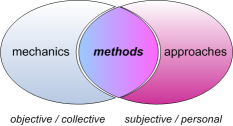

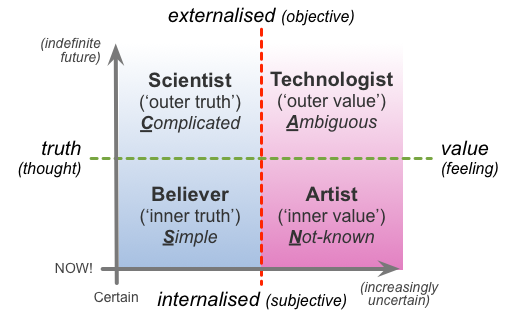

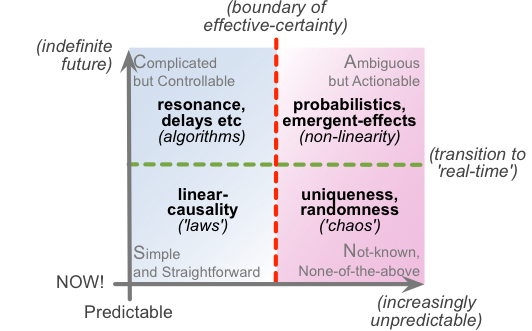
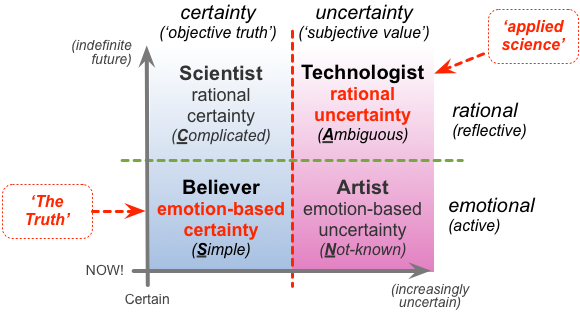
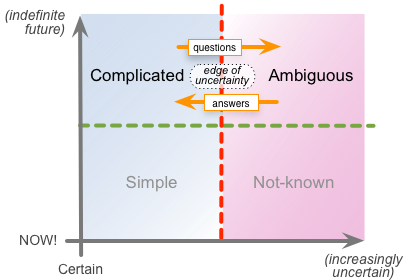
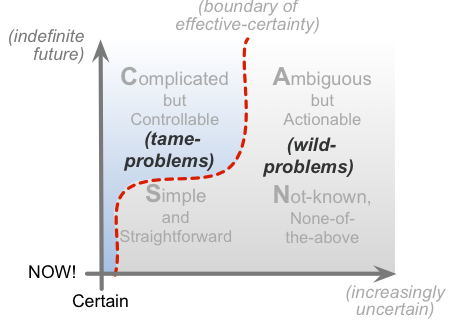
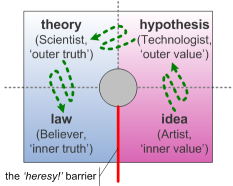
Very much looking forward to following this series as it unfolds.
Many thanks, Gene – I kinda hope it both amuses and, uh, hurts in equal measure, from painful recognition of the mistakes that we ourselves fall into? 🙂
Will look forward to further comments from you, anyway – and I hope it’s useful overall.